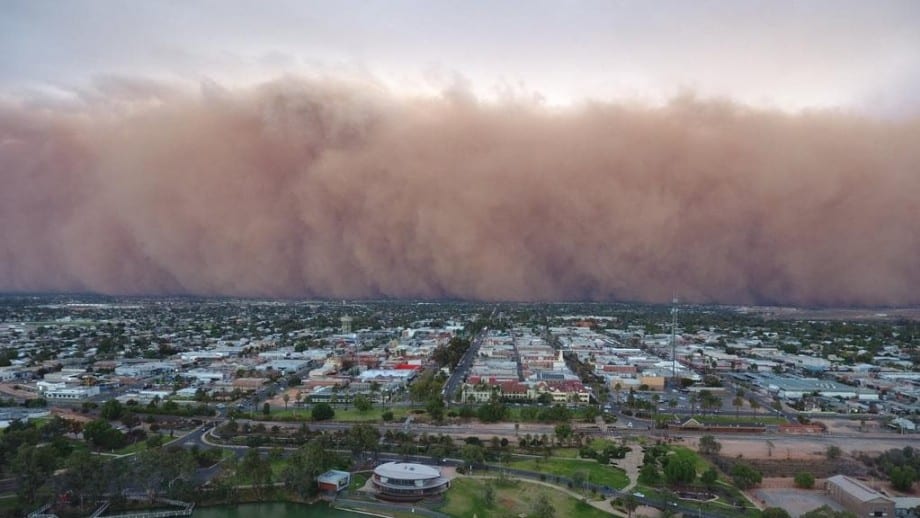Predicting extreme weather events allows governments to issue safety announcements and warnings and arrange evacuations. As a result, thousands of lives can be saved. Thankfully, extreme weather events don’t happen very often, although the US is one of the most affected countries in the world. As severe weather can be so dangerous, various technologies can be used to predict them. Topological data analysis (TDA) is one of the most exciting tools with the most potential in this area. Researchers have been using it for years to find weather patterns, and the data this yields can also help discover extreme incoming weather. So, just how does it work?
Current Weather-predicting Tools
Many tools currently in use collect weather data. The most common are satellites, buoys, weather balloons, weather stations, ships, and aircraft. The good thing about collecting data this way is that it’s rich and plentiful. In the US, aircraft deployed by the National Oceanic and Atmospheric Administration (NOAA) is one of the main ways weather data is collected. Some aircraft used include Beechcraft King Air 350, De Havilland DHC-6 Twin Otter, Lockheed WP-3D Orion, and Gulfstream IV-SP. These aircraft capture different data types and can do things such as snow surveying, arctic heat monitoring, hurricane reconnaissance and research, and coastal mapping.
Overcoming Nonlinear Challenges
While the current weather-predicting tools have many strong points, there are some downsides to the data they provide. One of the main problems is that weather systems are nonlinear, so a minor change in something, such as temperature or wind speed, can significantly impact another part of the weather system. This situation can lead to an extreme weather event that was not predicted. TDA is applicable in this case as it can prevent unexpected extreme weather events by handling and analysing nonlinear relationships and patterns.
TDA does this through topological and geometric tools that identify shapes and patterns. These shapes and patterns might not look important at first glance, but they are often the key to revealing that an extreme weather event is coming. In most cases, TDA initially uses simplicial complexes. This approach is where a combination of points, lines, triangles, and other shapes form a relationship between data. Cluster detection is a key feature of TDA, as it can identify where clusters are linked. Similarly, when a cluster, shape, pattern, or similar doesn’t look right, TDA can identify it. When it comes to extreme weather, this could look like a sudden drop in pressure, a rapid temperature change, or a swift change in wind direction.
Increasing Accuracy
Although climate change is increasing the frequency of extreme weather events, they are still considered rare, particularly things such as tornadoes, derechos (https://www.weather.gov/lmk/derecho), and cyclones. As weather events like these don’t happen often, the current weather data tools can have difficulties predicting them. These tools rely on historical weather data to determine if and when they’ll occur. As noted, TDA relies on relationships between patterns and shapes to foresee bad weather. But it also uses more technical techniques.
TDA is a very adaptive weather prediction tool. Even if there’s only ever been one case of an extreme weather event, TDA can use the data relating to that event to adjust its models to look out for a similar pattern in the future. As more data is collected and adjustments are made to the TDA model, the more accurate it becomes.
TDA can also be integrated with data collected by other means. Climate models, simulations, and satellite imagery are examples of this. When this is done, gaps in weather data can be filled in, and it can increase knowledge of how climate change impacts extreme weather. For example, when TDA and climate models are used together, potential scenarios in the future, such as persistent heat waves in the summer, can be anticipated. Other weather models already try to do this, but nonlinear changes can make this tricky. As you can see, TDA has the potential to work well with other weather data tools. But it’s also possible for it to be used with other technologies.
Using TDA with Other Technology
With technology growing rapidly, it makes sense for TDA to team up with other technology so that the precision of extreme weather events is as accurate as possible. Studies published in Nature recently revealed that artificial intelligence (AI) could be a powerful tool for forecasting extreme weather, including tropical cyclones and heavy rainfall. AI is designed to predict the weather using historical weather data and training to recognise patterns. This method is where TDA can assist, as creating and identifying patterns is one of the things that it does best.
One of the potential ways TDA and AI could be used together when looking for incoming extreme weather is real-time monitoring. Real-time monitoring is something that AI excels at. AI can monitor incoming data streams as they come in. The model has been trained to recognise topological patterns connected with extreme weather events. When the AI detects this, an alert is triggered that will put TDA into action. TDA’s role is to interpret the topological pattern and what they could mean for the weather. Over the coming minutes and hours, AI will continue monitoring topological patterns and sending alerts when more concerning patterns emerge. If TDA determines these patterns are a cause for concern, it’s a signal that meteorologists need to delve further into the data and put plans into place so that the public knows what’s to come.
TDA Extension Tools
AI isn’t the only other technology that TDA can be paired with. TDA has been used for years alongside TDA Mapper, an extension of TDA. TDA Mapper transforms high-dimensional data into simplicial complexes that are easier for TDA to interpret. It does this by reducing the number of data points by grouping them into overlapping bins, which form groups of clusters. This way of dealing with data is also more beneficial for TDA experts and meteorologists as it’s easier to read and spot weather trends and patterns in low-dimensional data than in complex, high-dimensional data.
While studies using TDA and TDA Mapper to predict extreme weather events are sparse, one study did use them both to delve into the weather that caused a series of wildfires in Southwestern America. Together, TDA and TDA Mapper helped the research authors conclude that active summers had more significant and long-lasting topological features than inactive summers. This result implied that some weather variables had a substantial impact on wildfires.
Topological data analysis can predict a range of extreme weather events due to the sheer amount of data it can analyse and its unique geometric and topological tools. Based on initial results, TDA can also be used in collaboration with other emerging technologies.


